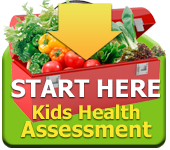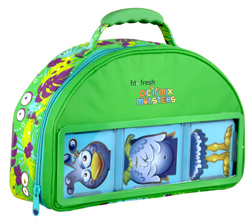When the majority of us speak about needing to change our diet to a one that is healthier, we talk about it as if it is one problem and therefore assume it should be simple to fix. That couldn’t be further from the truth. So if you beat yourself up because you think you are at an unhealthy weight or your children are eating too much junk food, stop!
In fact being overweight or eating an unhealthy diet is the outcome of many problems and issues that need to be “fixed”. When you look at the research and issues more closely it is not as simple as just changing your and your child’s diet plus exercising more. To give you a sense of what you are up against, here is a list of just some of the issues:
- Junk food can be addictive. More and more research is supporting what we have known for years. It is hard to stop at just one cookie or chip!
- The food and beverage industry bombards your child with advertisements for unhealthy food and drinks.
- The food industry combines food and toys to increase the appeal.
- Supermarkets place unhealthy food at kid height in the supermarket so that they will see it and scream for us to buy it for them.
So what are we supposed to do to overcome this onslaught of unhealthy messages?
 It starts by creating rules at home surrounding food. Teach your children that in order to get to the unhealthy, junk, processed food, they first must eat the healthy stuff that they need to grow and reach their potential.
It starts by creating rules at home surrounding food. Teach your children that in order to get to the unhealthy, junk, processed food, they first must eat the healthy stuff that they need to grow and reach their potential.- Portion control is essential because we all know that it is hard to stop eating foods high in salt, fat or sugar. Look at serving sizes on the website for a realistic idea of how many crackers, chips, or cookies are considered a serving size. You will be very surprised.
- Teach your kids from an early age that advertisements are not always truthful. Have them mute the TV when they come on or do something else until they are over.
- Before you even go into the grocery store, tell your child that they can pick one thing in the “treat/junk” category. If they continue to ask, whine or yell for more they lose the privilege and that one treat goes back on the shelf. They will learn soon enough.
What are some of your rules and tips for bringing up healthy eaters?






 Dr. Debbie Kennedy (Dr. Deb) is a pediatric nutritionist with 23 years of experience in the field. She has worked with both Yale and Columbia Universities, and has developed programs for some of the industry’s luminaries such as Dr. David Katz and Dr. Mehmet Oz.
Dr. Debbie Kennedy (Dr. Deb) is a pediatric nutritionist with 23 years of experience in the field. She has worked with both Yale and Columbia Universities, and has developed programs for some of the industry’s luminaries such as Dr. David Katz and Dr. Mehmet Oz. 

